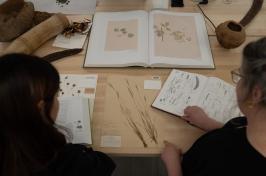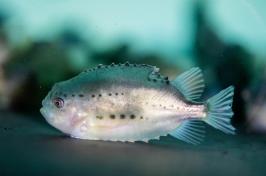
University of New Hampshire research suggests the genes of the cactus mouse may protect it from kidney damage in situations of extreme dehydration. (照片:礼貌)

主要研究 assistant professor 马特MacManes in his lab at Rudman Hall (Photo: Beth Potier)
Millions of people die every year from dehydration as a result of exposure and illness. 在人类, 即使是最轻微的脱水也会损害肾脏, 造成终身, 无法挽回的问题,甚至死亡. 然而, some animals living in desert environments are able to survive both acute and chronic dehydration. 而这些动物, 比如仙人掌鼠, have evolved over time to deal with environmental stressors like dehydration, researchers at the University of New Hampshire have found it’s not the physical makeup that is helping them survive, 而是他们的基因组成.
“最初, we thought that maybe their kidneys are structurally different from people, 但事实并非如此,” 马特MacManes, assistant professor of genome-enabled biology at 主要研究 and lead author of the 研究. “然而, 当暴露于急性脱水时, 肾脏未见明显损伤, which would definitely be the case for humans exposed to similar levels of dehydration, suggesting their genes may be what’s preventing widespread kidney damage.
“The kidney is the canary in the coalmine when it comes to dehydration,” continues MacManes. “The exciting outcome of this research is that the molecular toolkit of the cactus mouse has orthologues, 或者相关基因, 在人类. These provide the potential for development of drugs or other therapies that could help protect the human body from the damages of dehydration.” Such a response could be extremely valuable in a wide variety of situations — for people with renal failure, where water is severally limited due to geography or possibly global climate change, 用于部署在沙漠甚至太空旅行中的部队.
为了了解适应沙漠的仙人掌鼠(选择eremicus)生存, 这项研究, 最近发表在《永利app新版本官网地址》上, 概述了研究人员如何模拟类似沙漠的条件. The mice that went without water for 72 hours lost on average 23 percent of their body weight, 哪种对人类来说是致命的. Even though dehydrated, the mice continued to be active, eat and interact normally. 研究人员还分析了其他几个因素, 包括血清电解质(钠), 钙, 碳酸氢盐离子)以及血尿素氮和肌酐. 而两者都略有升高, 基于基因的肾损伤生物标志物则没有, 这说明没有发生肾损伤.
Further analysis found genes that are important in modulating electrolytes were very active, 负责维持肾脏血压的基因也是如此.
-
写的:
罗宾·雷,1982年 | 主要研究营销 | 罗宾.ray@999lsm.net | 603-862-4864




















































